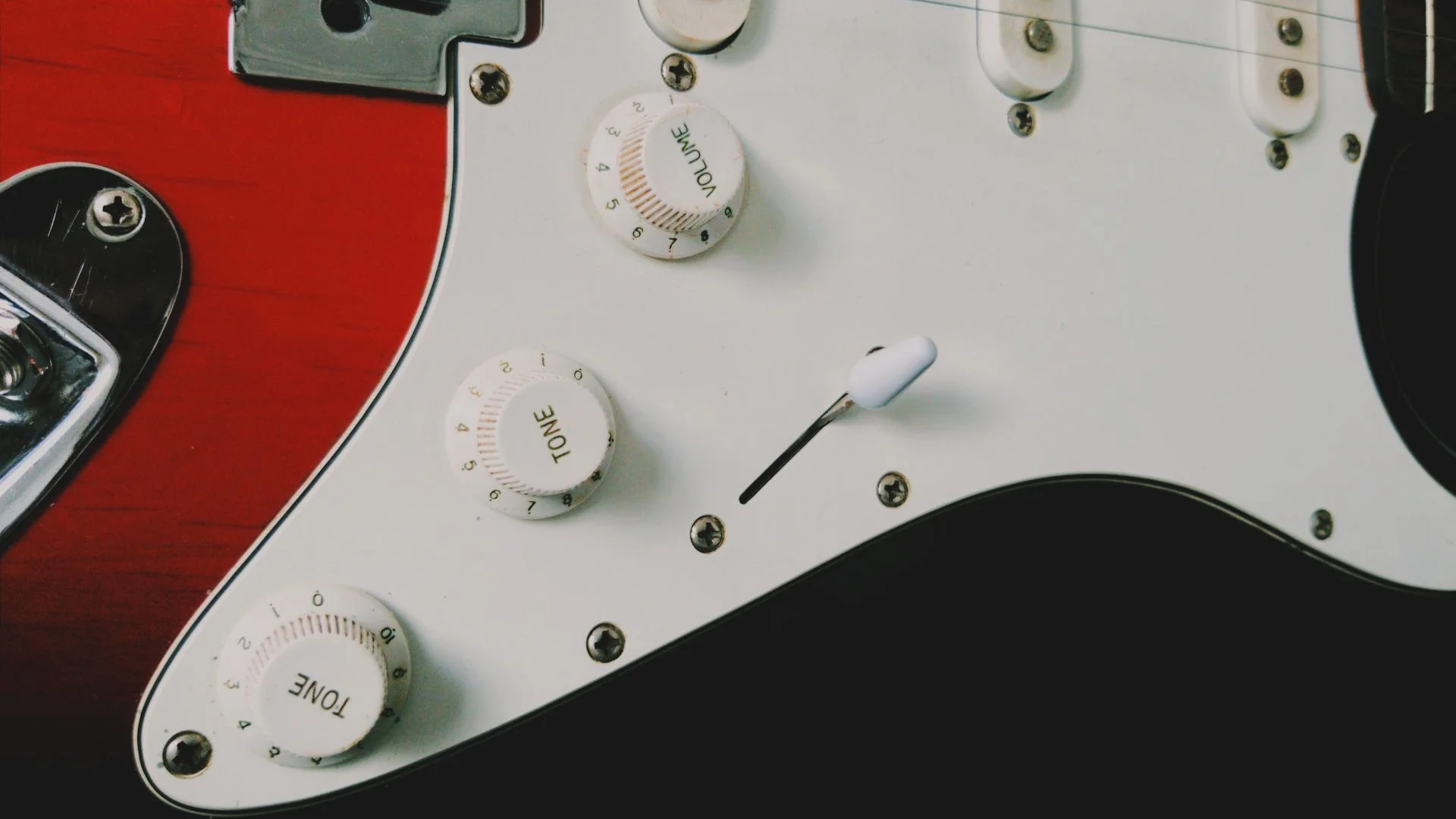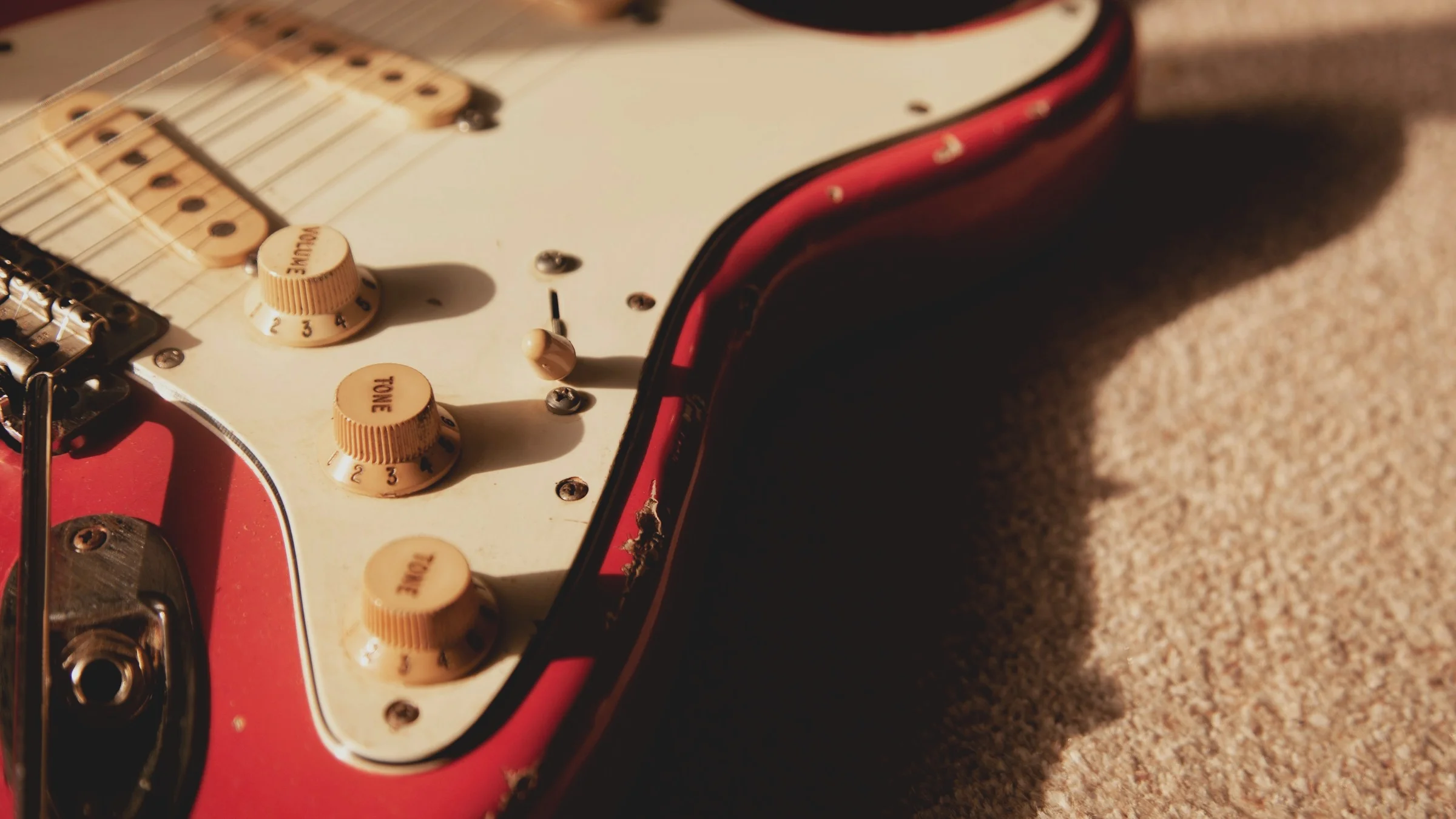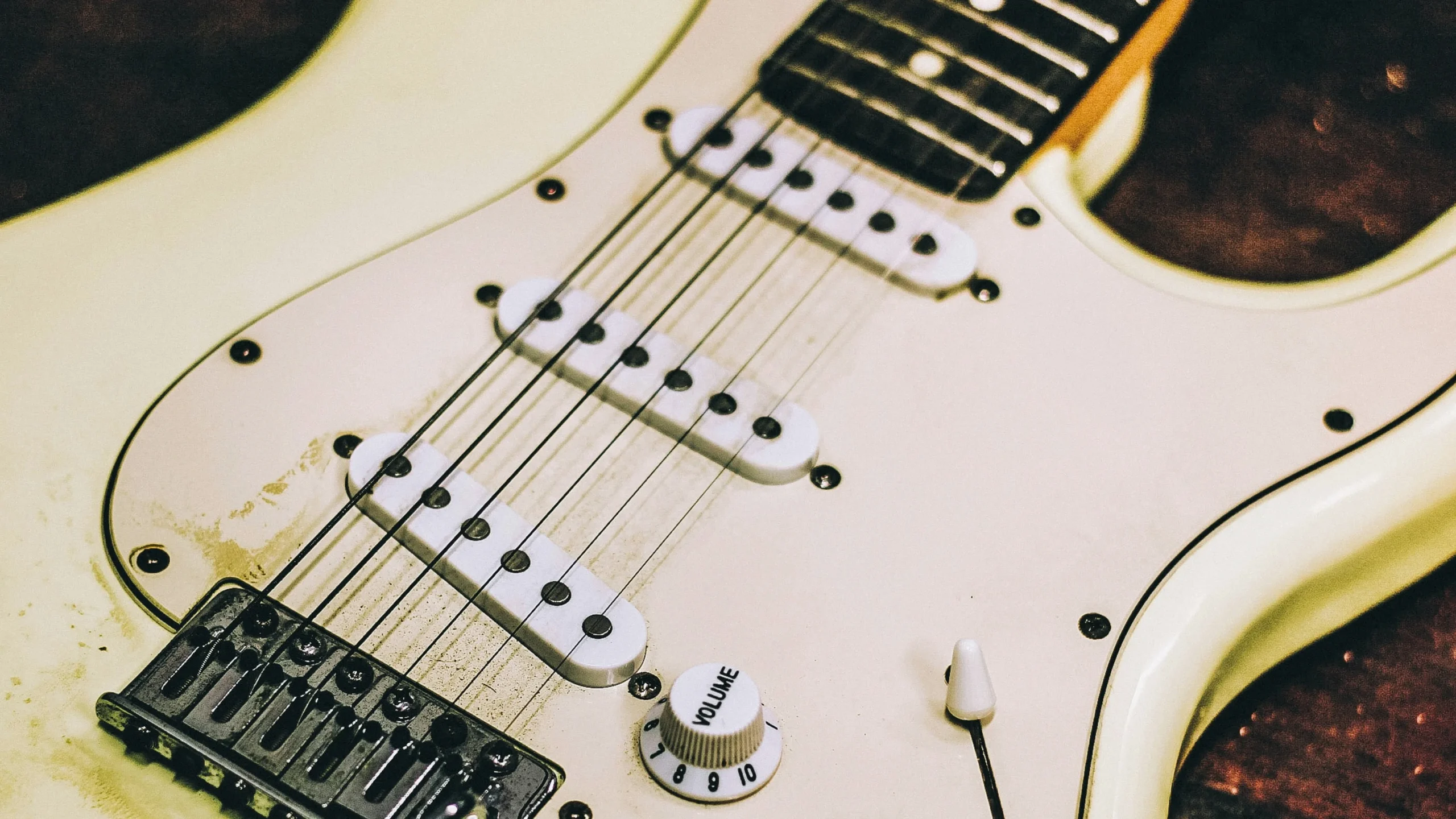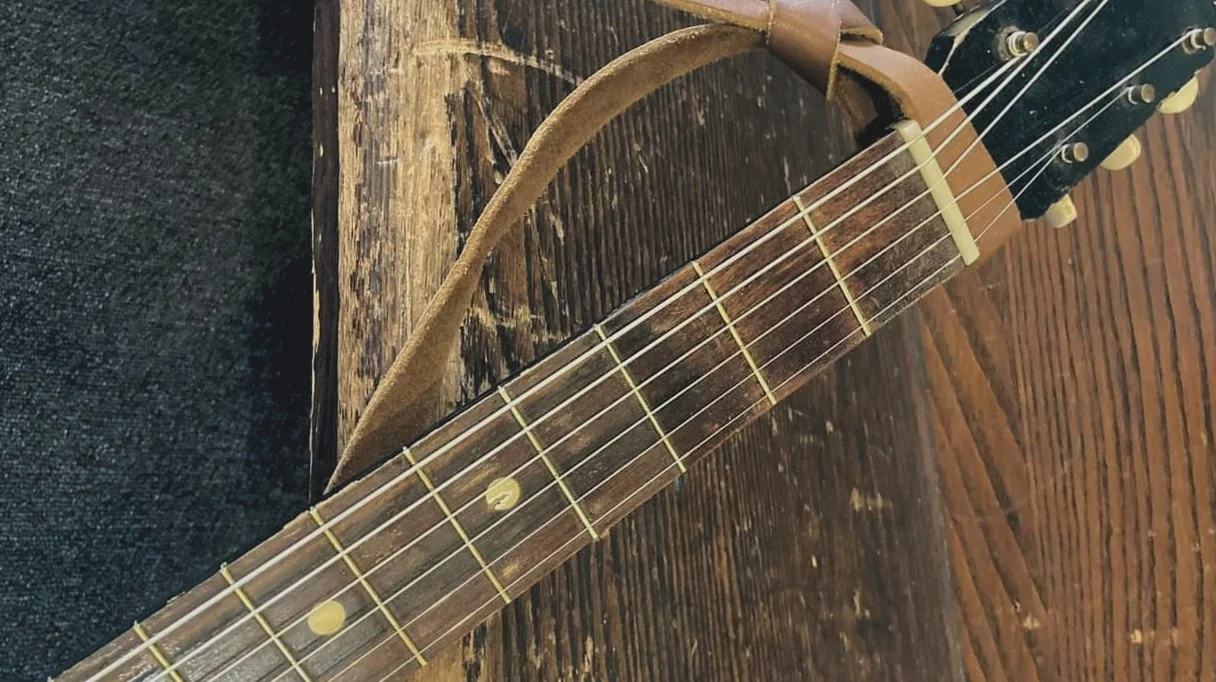
What Are The Switches On An Electric Guitar For?
If you’re new to playing the electric guitar, you may have noticed a row of switches and knobs on your instrument and wondered what they all do.
Don’t worry; you’re not alone!
Understanding the purpose of these switches is essential for getting the most out of your electric guitar and crafting your desired sound.
Here, I’ll explain each electric guitar switch and explain its function. From pickup selectors to tone controls, I’ll cover it all.
By the end of this article, you’ll have a solid understanding of how to use these switches to shape your sound and take your playing to the next level.
So, let’s dive in and demystify those switches on your electric guitar!
Table of Contents
Do All Electric Guitars Have A Switch?
Now that we’ve covered most of the critical information about electric guitar pickup switches, many guitar players may still have one more question: do all electric guitars have pickup selection switches?
The answer is no; not all electric guitars include pickup selectors.
The switch that controls the pickups on electric guitars is intended to make the guitar as adaptable as possible, providing as many tonal options as feasible from a single instrument.
On the other hand, some electric guitars are constructed mainly for one tone and do not require a pickup selector because they are not intended to be used with another tone.
This is typical of signature model guitars built by guitarists who play in bands that use a single tone.
These guitarists never alter pickups; therefore, a toggle switch is unnecessary.
Some guitars have only one pickup because the guitarist who constructed the guitar only requires one pickup in a specific location.
This guitar style also does not need a toggle switch, as there are no pickup options to flip between.
What Types Of Switches Are There On Electric Guitars?
A variety of businesses and brands produce numerous electric guitar models.
Varied guitars have varied wiring systems that match different hardware configurations, resulting in several electric guitar switches that function differently.
Two types of guitar pickup selectors are available: three-way switches and five-way switches.
Other switch types are much less frequent, but these two are the primary alternatives for most electric guitar models.
Five-way electric guitar pickups Selectors are commonly used on Strat-style guitars with three pickups. The normal approach to configure the switch is as follows:
- Position 1: bridge pickup alone.
- Position 2 combines bridge and middle pickups.
- Position 3: center pickup alone.
- Position 4 combines center and neck pickups.
- Position 5: neck pickup alone.
The first position is closest to the bridge pickup, while the fifth is closest to the guitar’s neck.
Each of these pickup settings produces a different guitar tone. The bridge pickup sounds bright, the neck pickup warm, and the center pickup clear and rich.
Combining these three-tone options allows for a wide variety of adaptability on electric guitars with five-way switches.
Three-way electric guitar pickup switches are commonly utilized on electric guitars with two pickups to use in tandem.
These switches are easier to grasp because they are used on guitars with fewer possibilities.
The usual three-way switch layout is shown below:
- Position 1: bridge pickup alone.
- Position 2 combines the bridge and neck pickups.
- Position 3: neck pickup alone.
This combination of possibilities produces three distinct tones from the instrument, as the bridge pickup on these guitars sounds typically very loud and forceful.
The neck pick sounds very warm and controlled, and combining the pickups results in a smooth, varied tone overall.
Some guitars feature two-way switches that only switch between two pickups without a combination setting, while others have three-way switches that flip between three pickups with no combinations.
What Does An Electric Guitar’s Pickup Switch Do?
The pickup switch on an electric guitar selects which pickups to utilize at any particular time.
The pickup switch is necessary because it controls the overall tone of an electric guitar.
Guitar pickup switches allow you to change the tone of your instrument by selecting one of the various pickups installed.
The guitar’s neck will vibrate less and more noticeably when playing, resulting in a fuller, more rounded sound.
The proximity of a pickup to a bridge amplifies the vibrations, resulting in higher frequencies. A guitar can have three pickups, with one between the neck and bridge pickups.
The Fender Stratocaster guitar featured a three-pickup system and a five-way switch.
A toggle or lever on some earlier Fender and Gibson models allowed the player to select a pickup while connected to an amplifier or another device.
The company provides several selector switch options and presentations. Depending on the tone you require, the switches have several positions.
A 5-way switch that functions as a 7-way switch is one of two ways to modify a Stratocaster guitar; the other options are a tone pot or an off-the-shelf switch.

What Are The Types Of Effect Controls?
Numerous types of controllers may be added to your guitar; we’ve covered the most common ones here.
Pickup Switch
The first step in altering your settings is to select the pickup. This could be the neck pickup, bridge pickup, or middle pickup.
The bridge pickup provides a significantly thinner tone since the amplitude is lower at the bridge position.
This makes the sound great for riffing and playing chords.
The Neck position generates a thicker sound since the amplitude is higher in the bass and higher in the middle.
This makes the sound great for single notes, like solos, because it thickens the tone.
The medium position falls somewhere in between. If you wish to play a solo but find the tone too thick, try switching to the middle pickup position.
This also applies to chords and riffs. When the bridge position feels too thin and twangy, switching to the middle position tightens the tone dramatically.
Volume
You can turn one, two, or all of the pickups on or off with the Volume buttons.
Tone
Most guitars have at least one TONE knob, which lets you change the signal’s frequency range before it goes to the amp.
It’s like the TONE button on radios, stereos, and other devices; it lets you change how much higher frequencies are sent to the output.
More “back” rolling of the knob will lower the higher frequencies, which can help the guitar sound less “shrill” if it does.
Tone knobs let you change the amount of high that goes through from none at all to a lot.
Humbucker
My setup has a humbuckers switch with four settings that let me move from a single coil to a humbucker.
Setting it to single coil is the lowest, and setting it to full humbucker is the highest. The strength of the humbucker gets stronger as you change the settings.
Kill Switch
When turned on, a kill switch turns off the volume. If you use it right, you can get some excellent results.
What Do Guitar Tone Switches Do?
Most electric guitars have three switches: one for the bridge pickup, one for the middle pickup, and one for the middle pickup.
With the tone switch, you can pick which pickups are working at any given time.
The sound of the neck pickup is usually softer and warmer, while the sound of the bridge pickup is generally clearer. In every way, picking up in the middle is the right move.

Can A Pickup Switch Change The Tone?
You can compare two guitars with the same pickup design, and the tone will not change.
If you compare instruments that let you choose the same pickup setup, it will stay that way; switching won’t change the music.
How To Use The Volume Knob?
The volume knob is a potentiometer or variable resistor, which means that the resistance number changes as you turn the knob.
This lets you change how strong the input that goes to the amp is. When the knob is fully turned in a clockwise direction, it has the least resistance.
This lets most of the signal level from the pickup pass through. As the level drops, the signal decreases, and the resistance increases.
In addition, moving the volume knob lower also stops the high sounds from going through, which makes the tone smoother.
Some makers use a non-linear pot where the resistance changes in a way that is related to the position of the knob.
This relationship is like the decibel scale, which is how people judge how loud something is (which is a complicated subject in and of itself).
It is known that these kinds of pots are much more accurate at showing how turning them changes the volume level.
You’ll have to fiddle with the volume knob a bit to find the best setting because it changes both the volume and the tone.
Start between 5 and 7. A lot would depend on how you want your tone to sound if your guitar has more than one volume button.
You could use both pickups or the neck pickup if you desire a soft sound. For the neck pickup, set the volume to 5–6 and the bridge pickup to 3–5.
Remember that if the pots are Audio-Taper (or not linear), you might notice a sudden rise after 6-7.
How To Use The Tone Knob?
The tone knob works a lot like the volume knob. It is a changeable resistance of the potentiometer.
It’s a low-pass filter that lets low frequencies go through and lets you change how much high frequencies go through.
Changes in tone can be seen as changing the “warmth” of the tone. It will make the sound softer and mellow as you turn it down.
The sound would be shrill and sharp if the setting were raised to let more treble waves through. There would be less bass.
It is important to note that on passive guitars, the tone knob will only lower the frequencies, not raise them.
On the other hand, tone knobs on active guitars work a little differently because they can boost specific frequencies and act more like bass boost knobs.
Along with the pickup selector switch, the tone knob may be the most essential part of changing the general tone.
Too low would make the sound fuzzy, and too high would make it sound too sharp.
The same goes for the tone control setting: it’s very personal and something you can play around with.
You can start with a range of 7-8 and change it based on the songs you want to play.
Push-Pull Tone Knobs
Some guitars with humbucker pickups have a push-pull switching device built into the tone, and sometimes the volume knobs can turn the humbuckers into single coils by choosing a single coil inside the humbuckers (which have two coils inside).
The tone knob’s “Pushed” position is the humbucker, and its “Pulled” position is the single-coil.
The general sound can also be changed a lot by the dual-coil or single-coil configuration.
Single coils have a brighter, clearer tone but may have noise or hums. Humbuckers, on the other hand, have a fuller, deeper, and warmer tone.
Final Words
The switches on an electric guitar serve essential functions that can significantly impact the sound and performance of the instrument.
From selecting different pickup configurations to adjusting tone and volume, these switches allow guitarists to customize their sound and create a wide range of tones.
Whether you’re a beginner or an experienced player, understanding how these switches work and experimenting with different settings can enhance your playing experience and help you achieve the desired sound for your music.
So pick up your electric guitar, explore the various switch options, and unleash your creativity with this versatile instrument.


